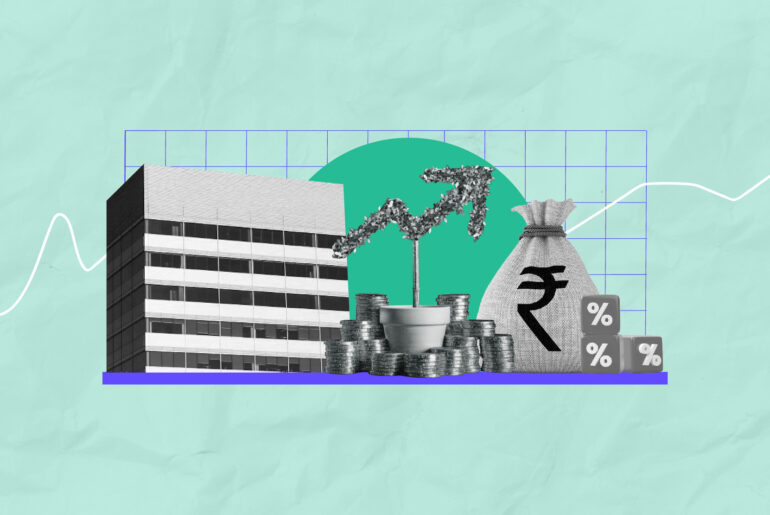Last Updated on May 24, 2022 by Aradhana Gotur
The Cost Inflation Index (CII), issued by the Central Board of Direct Taxes (CBDT) every year, is helpful for investors at the time of tax filing to determine the capital gains, on which they owe taxes. The indexation rates can be used to minimize the capital earned on paper, thereby reducing the tax outgo.
CBDT has notified the CII for the Financial year (FY) 2021 – 2022 as 317 that will be applicable to the Assessment Year (AY) 2022 – 2023. There is an increase of 16 points in the CII over the previous financial year, which was 301. Analysts consider this indexation rate reasonable to compute capital gains on the sale of assets.
Table of Contents
What is cost inflation indexation?
Cost Inflation Indexation (CII) is an index. Indexation values, notified by the CBDT, are used to calculate the increased values of goods and services over time. This increase in prices with time is also called inflation. Inflation makes things expensive and the purchasing power of consumers slide due to an increase in asset prices over time.
This means consumers would be able to buy less quantity of goods for one unit of money due to increased costs. For example, if you could purchase two blocks of chocolate for Rs.200 today, tomorrow only a single unit may be available for the same amount – Rs.200 – due to inflation. The Cost Inflation Index (CII) measures this hike in the prices y-o-y caused because of inflation.
Some investments such as in property, jewellery or debt mutual funds, where there is an incidence of capital gains upon sale of the asset, the government allows for adjustment of the purchase price in line with the inflation rate for the year so that the overall tax on capital gains is reduced for the investor. This is termed indexation benefit. Note that not all investments have indexation benefits, and not all investment horizons qualify for indexation benefits.
How do we use Cost Inflation Indexation rates?
To calculate the inflation-adjusted prices
Cost Inflation Index is used to calculate increased inflation over time that leads to a rise in prices of goods and services. The CII is estimated to match the asset or goods prices to the inflation rate. Thus, CII is used to estimate inflation-adjusted prices.
Inflation-adjusted cost is calculated by using this formula:
(CII number for the year of sale/CII number for the year of purchase) * Actual Cost.
The CII can be used to calculate the price of assets like land, house, gold, debt mutual funds, etc., where inflation-adjusted price calculation (indexation benefit) is permitted. However, it cannot be used for shares and equity-oriented funds on which the capital gains are taxable @ 10% or 20%, as the case may be, without any indexation benefit.
To calculate long-term capital gains (LTCG)
An individual selling their real estate, debt funds, bonds, or jewellery, is liable to pay tax on the profits generated from such sale or transfer. The gains fall under the header capital gains and are taxed accordingly. The calculation of capital gains varies for short-term and long-term capital gains.
Based on the CII number, this inflation-adjusted price is required to arrive at LTCG or LTCL for the assets for which indexation is permitted before the implication of LTCG tax. A taxpayer needs to pay tax on these gains while filing income tax returns (ITR).
Thus, when calculating LTCG, you may use the indexed cost of acquisition and improvement to minimize your taxes.
To benefit the taxpayers
Long-term capital assets are listed at cost prices in the books of companies. Even if inflation increases every year, they exist in records at the cost price without revaluation. Moreover, at the time of their sale, the profit earned from their sale remains high because of the higher sale price than the purchasing price. It also results in higher taxes. The indexation rate is applied to these assets that increase the purchase price and lessen the profits on paper. Ultimately, it reduces taxes and benefits taxpayers.
How does cost inflation indexation work?
The base year
The base year to calculate indexation rates is the first year of the CII. Indexation rates of all other years are based on the base year with an index value of 100.
Initially, 1981-1982 was the base year. In 2017, the base year was shifted to 2001 to ease the calculation for taxpayers in determining the relevant information. For capital assets acquired before 1 April 2001 individuals can take actual cost or Fair Market Value (FMV) as the purchasing cost and avail indexation benefits. FMV is based on the analyzed and authorized valuation report.
Indexed cost of acquisition
Uncertain economic factors can lead to asset value inflation over time. For example, the cost of one gram of gold was Rs.50,000 at a point in 2020, but it had been available at half of this price in 2002. But again, it would be unfair to tax gains calculated without factoring in the inflation rates. Thus, indexation reflects the actual value of an asset at prevailing market rates after considering its decayed value due to increasing inflation.
Property owners who had purchased the property before 2001, the base year, can benefit from such a shift in the base year because of the high appreciation value of the property.
This way, CII helps to reduce capital gains and the tax burden by adjusting asset’s purchasing costs.
Illustration
Assume that ABC purchased a property for Rs.10 lakh in the FY 2001 – 2002. ABC sold this property in FY 2016 – 2017 for Rs.50 lakh. His indexed cost of acquisition would be as follows:
For this case, CII for the year 2001 – 2002 and 2016 – 2017 is 100 and 264, respectively.
Hence indexed cost of acquisition = 10,00,000 x (264/100) = Rs.26,40,000
Long term capital gain = Selling price – Buying price.
Here, buying price has been adjusted to inflation to become Rs.26.4 lakh instead of the original Rs.10 lakh.
Therefore, LTCG = Rs.50,00,000 – Rs.26, 40,000 = Rs.23,60,000 (and not Rs.50,00,000 – Rs.10,00,000 = Rs.40 lakh)
Taxed at 20%, LTCG = 20%@ Rs.23.6 lakh = Rs.4.72 lakh (saving Rs.8 lakh)
Now if ABC had acquired the property in FY 1994 – 1995 at Rs.2 lakh and sold in FY 2016 – 2017 (Take FMV on 1 April 2001 as Rs.4 lakh), then calculations would have been as follows :
Since the asset is purchased before base year, Cost of acquisition= FMV on 1 April 2001
CII for FY 2001 – 2002 and 2016 – 2017 is 100 and 264, respectively.
The cost of acquisition = 4,00,000 x (264/100) = Rs.10.56 lakh
Features
- The CII estimates the rise in asset prices year by year due to inflation.
- It is based on a specific calendar year set as a base year by the central government.
- It is a measure of inflation to be taken into account to compute long-term capital gains/loss on sale/transfer of assets.
- Calculation of indexation rate is based on the comparison of base year to all years’ indexes.
- It is necessary to calculate the asset’s indexed cost of the purchase price to benefit from CII to compute long-term capital gains and its taxes.
Conclusion
The process of calculating an inflation-adjusted price for capital assets on account of the effect of increasing inflation using the CII number is referred to as indexation. While indexation rate could be difficult to calculate for some, taxpayers can decrease their tax assessable LTCG with the benefit of indexation. It is, therefore, important to keep an eye on government policies and announcements for the same.







